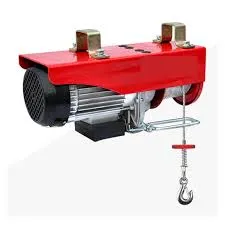


Portable Fall Protection Ensuring Safety on the Job
In industries involving construction, maintenance, and other elevated work activities, worker safety is paramount. Falls are statistically one of the leading causes of workplace injuries and fatalities. To mitigate these risks, portable fall protection systems have become essential tools for ensuring the safety of personnel. These systems not only provide a secure means of fall protection but also offer flexibility and ease of use across various job sites.
What is Portable Fall Protection?
Portable fall protection systems are versatile safety devices designed to prevent workers from falling from heights. Unlike permanent solutions such as guardrails or static lifting systems, portable systems can be easily transported and set up wherever needed. Common types of portable fall protection systems include harnesses, lanyards, lifelines, and anchorage points, all of which are critical components that help create a comprehensive safety plan.
Benefits of Portable Fall Protection Systems
1. Flexibility and Mobility One of the significant advantages of portable fall protection is its ability to adapt to different work environments. Whether at heights on scaffolding, rooftops, or other elevated surfaces, these systems can be set up quickly and efficiently, making them an ideal solution for dynamic job sites.
2. Ease of Use Modern portable fall protection systems are designed with user-friendliness in mind. Many come equipped with straightforward instructions and features that facilitate quick assembly and disassembly. This ease of use is vital for maintaining productivity without compromising safety.

3. Cost-Effectiveness Investing in portable fall protection can be economically advantageous for companies. Rather than installing permanent fall protection systems on every site, businesses can opt for portable solutions that serve multiple projects. This way, they can save on costs while still adhering to safety regulations.
4. Compliance with Regulations OSHA and other regulatory bodies have set forth strict guidelines concerning fall protection in the workplace. Utilizing portable fall protection systems helps employers comply with these regulations, ensuring not only the safety of their workers but also avoiding costly fines and legal issues.
Choosing the Right Portable Fall Protection System
When selecting a portable fall protection system, it is crucial to consider several factors. First, assess the specific work environment and tasks to determine the appropriate type of fall protection required. Next, evaluate the system’s weight capacity and ensure it meets the necessary safety standards. Additionally, training is essential; workers must be knowledgeable about how to properly use and maintain fall protection equipment.
Conclusion
In conclusion, portable fall protection systems play a vital role in ensuring the safety of workers in high-risk environments. With their flexibility, ease of use, cost-effectiveness, and ability to meet regulatory compliance, these systems are indispensable in promoting a culture of safety. By integrating effective portable fall protection solutions into operations, employers can protect their workforce from falls, thereby creating a safer and more productive work environment. Investing in worker safety not only preserves lives but also enhances overall project efficiency and success.



